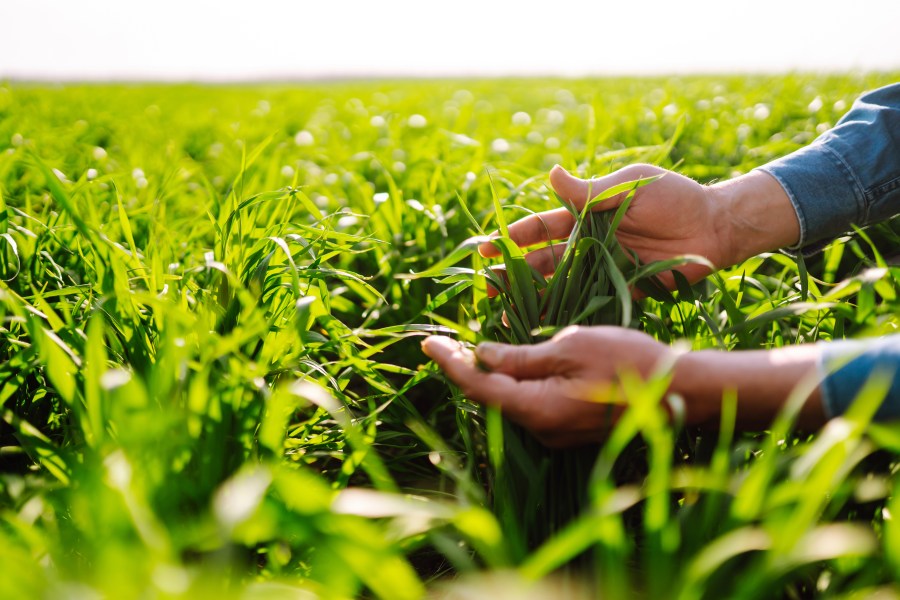It’s widely acknowledged that soil biology, and therefore activity, are essential contributors to its overall health status. But key to this is understanding the drivers, which if optimised, can result in a range of added crop benefits and potential efficiencies.
That’s according to Agrovista agronomist Quentin Ham, who’s been exploring the use of a microbe food with the aim of keeping soils active.
“When considering soil health, part of this is helping soils to wake up and remain active for as long as possible. However, soil life is a ‘sugar junkie’ – it relies on both sugar and carbon to thrive.
“So as those stocks become depleted over time we have to find ways to replenish them – essentially fast-tracking the process to help soils to work harder and faster,” he says.
Liquid carbon
To achieve this, he’s been recommending the use of QLF Agronomy’s L-CBF Boost – a liquid carbon molasses-based fertiliser known for its properties as a microbe and fungi food.
Quentin was first introduced to the product during an Innovation for Agriculture meeting, where attendees were discussing its perceived role in reducing the impact of glyphosate applications on soil fungi. “When I looked into L-CBF Boost further, what intrigued me was its consistent performance across years. Having a background in crop trials, I know this isn’t always the case so it stood out.”
Soil analysis
Before applying L-CBF Boost, Quentin advises conducting a comprehensive soil analysis first, including quantifying soil organic matter – an indicator of the potential nutrient reserve within the soil, as well as the biological indicators for how well the soil is functioning. The results of which will provide insight into how best to use the product, he says.
“For example, a healthy soil with good organic matter content and high biological function will almost certainly benefit from an application of L-CBF Boost. Then, if there’s good soil organic matter but low function, the outcome could be that L-CBF Boost helps to waken it up.
Application timings
In terms of application timings, Quentin recommends using L-CBF Boost in February to help wake autumn-sown cereal crops up, priming them ahead of nitrogen-based fertiliser applications. He believes in doing so, it starts to feed the crop and improve greening, which can lead to increased photosynthesis and therefore better fertiliser efficiency.
“If possible, following this up later around T0 timing drives plant development even further. It’s about opening up opportunities to make efficiencies through healthier plants, whether that’s reducing fertiliser or fungicide applications.”
David Maxwell, national sales director for QLF Agronomy, added there’s a considerable upside for application on spring crops too. “With spring-sown crops having a shorter growing period, the importance of a good start is paramount.
“Adding L-CBF Boost around planting, either applying beside the seed or with the first fertiliser pass, helps the young seedling to establish more quickly due to the rhizophagy cycle and therefore can increase yield potential as well as improve NUE.
“This is also the case for maize where a 20 l/ha pre and post emergence application has been found to be very effective.”
Consistent performance
Quentin has been using L-CBF Boost – part of Agrovista’s Innovation Range – for four seasons and confirms it offers consistent results across a range of crops including oilseed rape and winter cereals. Whereas in maize, he says he’s seen it deliver ‘tremendous’ results.
“Grower perceptions are improving around molasses-type products, especially for those who are focusing attention on fostering soil health.
“And if they’ve taken the leap and applied L-CBF Boost, they’ve seen the results and many now use it year-on-year,” concludes Quentin.
L-CBF Boost contains filtered cane molasses and a range of nutrients and growth promoting compounds, including nitrogen, potash, sulphur, amino acids and organic acids.




